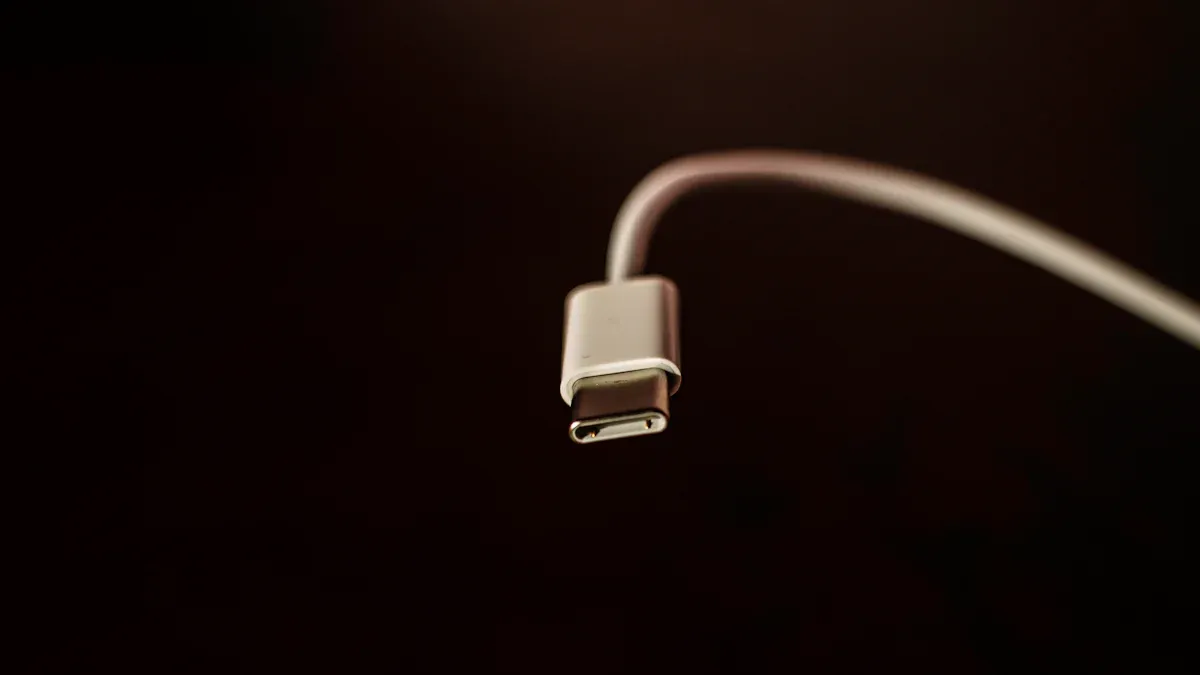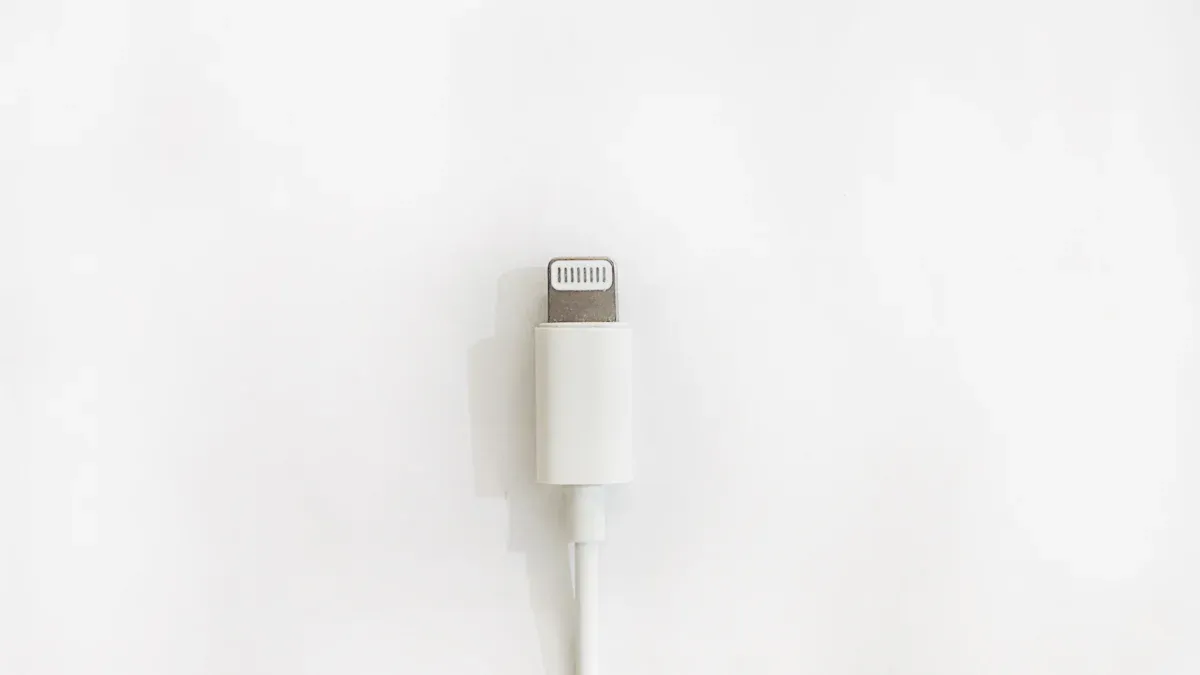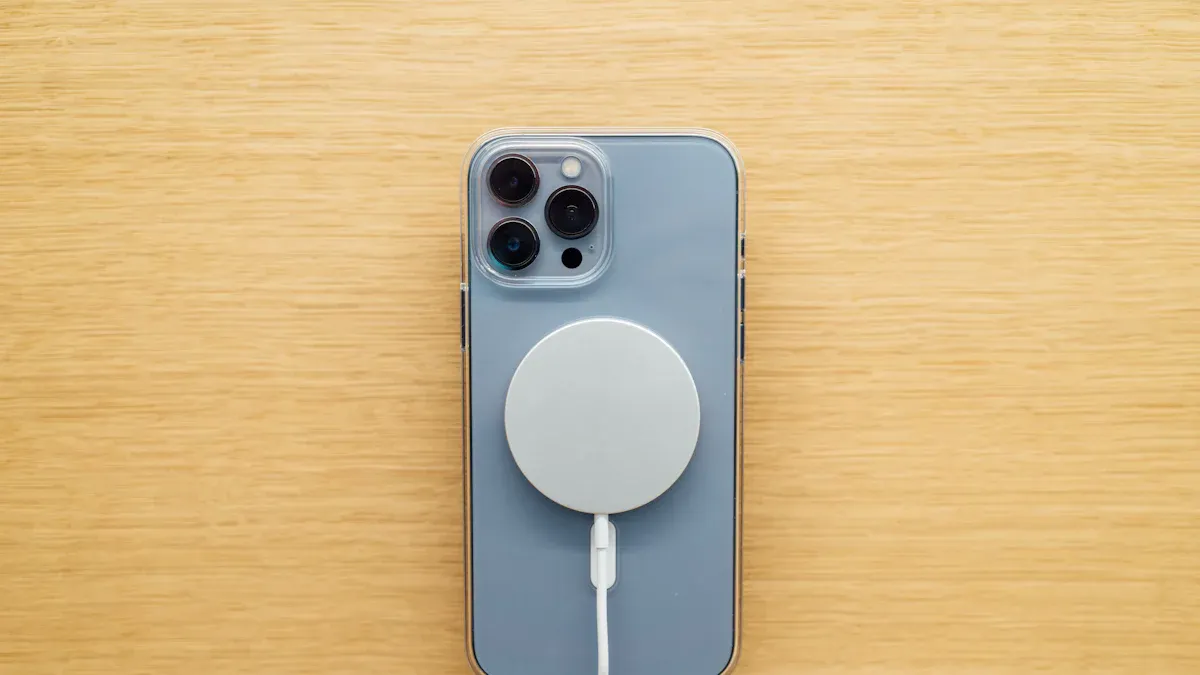Apple has consistently redefined how you interact with technology. From its devices to its accessories, every element reflects innovation. Apple charger plugs are no exception. Over the decades, these plugs have evolved to improve charging efficiency and user convenience. Each new design has aimed to make your experience more seamless.
Understanding this evolution helps you appreciate the thought behind Apple’s designs. It also prepares you for future transitions in charging technology. Whether you use an iPhone, iPad, or MacBook, knowing how Apple integrates charging solutions into its ecosystem can enhance your daily life.
The 30-Pin Dock Connector: Apple’s First Charging Standard
The introduction of the 30-pin connector with the iPod
Apple introduced the 30-pin dock connector in 2003 with the third-generation iPod. This marked a significant shift in the design of Apple cables, replacing the older FireWire port. The new connector allowed users to connect their devices to a computer or an adapter for charging and data transfer. The third-generation iPod, announced on April 28, 2003, and released on May 2, 2003, became the first device to feature this innovative connector. This change laid the foundation for Apple’s future ecosystem of accessories and connectors.
Features and limitations of the 30-pin design
The 30-pin connector offered several features that made it stand out. It supported multiple data and power pins, enabling faster data transfer compared to the Mini-USB connectors of that era. It also allowed for direct control of devices, enhancing user interaction. Additionally, the connector supported video and digital audio output, making it versatile for various uses.
| Aspect | Description |
|---|---|
| Widespread Use | Common across most Apple devices including iPhone, iPod Touch, and iPad from 2003 to 2012. |
| Multifunctionality | Supported USB, FireWire, audio outputs, and later video, allowing diverse accessory compatibility. |
| Ecosystem Creation | Enabled a cottage industry of third-party accessories, enhancing user experience and device functionality. |
However, the 30-pin design had its limitations. Its large size made it less suitable for thinner devices. The connector also lacked the reversible feature, which meant you had to align it correctly before plugging it in. Over time, these drawbacks became more apparent as technology advanced.
Why Apple moved away from the 30-pin connector
Apple’s decision to move away from the 30-pin connector stemmed from the need for a more compact and efficient solution. As devices became slimmer, the bulky design of the 30-pin connector posed a challenge. The introduction of the Lightning connector in 2012 addressed these issues. It offered a smaller, reversible design and faster data transfer speeds. This transition marked a new chapter in the history of Apple charger plugs, reflecting the company’s commitment to innovation and user convenience.
Lightning Connector: A Game-Changer for Apple Devices
Launch of the Lightning connector in 2012
In 2012, Apple introduced the Lightning connector alongside the iPhone 5. This marked a pivotal moment in the evolution of apple charger plugs. The new connector replaced the aging 30-pin design, which had been in use for nearly a decade. With its sleek, eight-pin configuration, the Lightning connector was designed to meet the demands of modern devices. It was smaller, faster, and more efficient, aligning perfectly with Apple’s vision of creating thinner and more powerful products.
The launch of the Lightning connector also came with a new range of lightning cables and adapters. These accessories ensured compatibility with older devices while offering improved performance for newer ones. For iPhone users, this transition meant a more seamless experience when charging or syncing their devices. The introduction of Lightning set the stage for Apple’s next generation of innovation.
Key advantages of Lightning over the 30-pin connector
The Lightning connector brought several key advantages over its predecessor. Its compact size allowed Apple to design slimmer devices, such as the iPhone 5 and later models. The reversible design eliminated the frustration of plugging in cables incorrectly, a common issue with the 30-pin connector. This feature alone made Lightning cables a favorite among iPhone users.
The table below highlights some of the key differences between the Lightning connector and the 30-pin connector:
| Feature | Lightning Connector | 30-Pin Connector |
|---|---|---|
| Size | Smaller | Larger |
| Reversible Design | Yes | No |
| Data Transfer Rate | Faster | Slower |
Additionally, the Lightning connector’s eight-pin configuration enhanced both data transfer and charging capabilities. Faster data transfer rates made syncing your iPhone with a computer or adapter more efficient. The smaller design also reduced the physical space required for the connector, allowing Apple to innovate further with device designs.
Tip: The reversible design of Lightning cables is especially useful in low-light conditions, where fumbling with cables can be frustrating.
The role of Lightning in Apple’s ecosystem for over a decade
For more than a decade, the Lightning connector has been a cornerstone of Apple’s ecosystem. It has powered countless iPhones, iPads, and accessories, becoming synonymous with Apple’s commitment to quality and innovation. Lightning cables have also played a crucial role in connecting devices to adapters, computers, and other peripherals, ensuring a seamless user experience.
Apple’s decision to standardize the Lightning connector across its product lineup created a unified ecosystem. This consistency made it easier for you to switch between devices without worrying about compatibility. Whether you were charging your iPhone or transferring data to a MacBook, Lightning cables provided a reliable solution.
Despite the rise of USB-C as a universal standard, the Lightning connector has remained a favorite among iPhone users. Its durability, efficiency, and ease of use have cemented its place in Apple’s history. As Apple continues to innovate, the Lightning connector serves as a reminder of the company’s ability to redefine technology.
USB-C Charging: Embracing Universal Standards
The rise of USB-C as a universal charging standard
USB-C has become the gold standard for modern connectivity. Its rise can be attributed to its versatility and efficiency. Unlike older connectors, the USB-C connector offers a smaller, reversible design that simplifies plugging in your devices. This innovation has made it a favorite among manufacturers and users alike.
Several factors have driven the adoption of USB-C. The European Union has mandated that mobile phones, tablets, and cameras must adopt USB-C as the standard charging port by 2024. This regulation aims to reduce electronic waste and save consumers approximately USD 250 million annually. Additionally, the global USB Type-C market is projected to grow at a compound annual growth rate (CAGR) of 24.03% from 2024 to 2032, reaching USD 175.8 billion by 2032. These numbers highlight the growing demand for USB-C connectors across various industries.
Did you know? The adoption of USB-C is expected to reduce electronic waste by about 1,000 tons annually, making it an eco-friendly choice.
Apple’s transition to USB-C and its implications
Apple’s move to USB-C reflects its commitment to staying ahead of technological trends. The transition began with the MacBook in 2015, followed by the iPad Pro in 2018. Regulatory changes, particularly from the European Union, have accelerated this shift. By adopting USB-C, Apple aligns itself with a universal standard, simplifying connectivity for users.
This change has significant implications for both consumers and manufacturers. For you, it means fewer cables and adapters cluttering your workspace. USB-C’s compatibility with a wide range of devices ensures a seamless experience. However, the transition also impacts accessory manufacturers, who must adapt their products to the new standard. Apple’s history of changing cable standards shows its willingness to embrace innovation, even if it disrupts the market temporarily.
Benefits of USB-C for Apple users
The benefits of USB-C extend beyond its sleek design. For Apple users, the USB-C connector offers faster charging and data transfer speeds. It supports USB Power Delivery, which can provide up to 240 watts of power. This means you can charge your devices more quickly and efficiently. The connector also enables high-speed data transfer, with rates of up to 40 Gbps, making it ideal for professionals who need to move large files.
| Feature | USB Type-C | Previous USB Standards |
|---|---|---|
| Package Size | Smaller | Larger |
| Conductors | 24 contacts | 4 or 5 conductors |
| Durability | Up to 10,000 cycles | 1,500 cycles |
| Current Rating | Up to 5 A | Lower |
| Voltage Rating | Up to 20 V | Lower |
| Power Delivery | Up to 240 W | Lower |
| Data Transfer Rate | Up to 40 Gbps | Lower |
USB-C’s versatility is another major advantage. It supports a variety of devices, from smartphones to laptops, and even peripherals like monitors and external drives. This eliminates the need for multiple cables, streamlining your setup. For mobile professionals, USB-C offers a perfect balance between compactness and functionality. You can carry fewer accessories without compromising on performance.
Tip: When purchasing USB-C power adapters or cables, look for certified products to ensure safety and compatibility with your Apple devices.
The USB-C port also addresses common user pain points. Many users have expressed frustration with the lack of adequate ports on their devices. USB-C solves this issue by offering a single port that can handle multiple functions, including charging, data transfer, and video output. This makes it a versatile solution for modern connectivity needs.
MagSafe: The Return of Magnetic Charging
MagSafe’s introduction for MacBooks and its evolution
Apple first introduced MagSafe in 2006 with the MacBook Pro Aluminum. This magnetic charging solution revolutionized how you powered your laptop. The magnetic connector ensured a secure yet easily detachable connection, preventing accidental disconnections from damaging your device. Over the years, Apple refined MagSafe, incorporating it into models like the MacBook Air Unibody in 2008.
| Year | MacBook Model | MagSafe Evolution |
|---|---|---|
| 2006 | MacBook Pro Aluminum | Introduced MagSafe power adapter, enhancing safety and reducing cable strain. |
| 2008 | MacBook Air Unibody | Continued use of MagSafe, marking the evolution of design. |
| 2016 | MacBook Pro | Shifted to USB-C, phasing out MagSafe. |
| 2021 | MacBook Pro 14/16-inch | Reintroduced MagSafe 3, improving compatibility for professionals. |
| 2023 | MacBook Pro 14/16-inch M2 Pro/Max | Enhanced Thunderbolt 4 support, continuing the evolution of connectivity. |
In 2016, Apple replaced MagSafe with USB-C for its MacBook lineup. However, the demand for a dedicated magnetic charging solution led to the reintroduction of MagSafe 3 in 2021. This version combined the benefits of MagSafe with modern advancements, offering faster charging and improved compatibility.
Reintroduction of MagSafe for iPhones
Apple brought MagSafe back to the spotlight in 2020 with the iPhone 12 series. This time, it wasn’t just a charging solution but a versatile ecosystem of accessories. The magnetic attachment allowed you to snap on chargers, wallets, and cases effortlessly. This innovation enhanced convenience and opened up new possibilities for accessory integration.
MagSafe for iPhones also improved wireless charging efficiency. The precise alignment ensured optimal power transfer, reducing energy loss. This feature made MagSafe a favorite among users who valued both functionality and style.
Note: MagSafe wallets and cases are designed to work seamlessly with your iPhone, ensuring a secure fit and easy attachment.
How MagSafe complements USB-C charging in Apple’s ecosystem
MagSafe and USB-C work together to create a cohesive charging experience. USB-C provides universal compatibility across Apple devices, while MagSafe offers a tailored solution for specific needs. For example:
- Seamless Connections: USB-C lets you charge and transfer data across multiple Apple devices with a single cable.
- Cross-Device Compatibility: You can use the same USB-C cable for your MacBook, iPad, and other accessories.
- Accessory Universality: USB-C’s widespread adoption ensures compatibility with third-party accessories.
- Charging Speed: MagSafe 3 generally charges MacBooks faster than standard USB-C chargers.
- Power Delivery: USB-C delivers up to 100W of power, but MagSafe offers a more efficient solution for MacBooks.
- Versatility: USB-C supports high-speed data transfer and video output, making it ideal for multitasking.
MagSafe complements USB-C by addressing specific user needs. While USB-C excels in versatility, MagSafe focuses on safety and ease of use. Together, they form a robust ecosystem that enhances your experience with Apple charger plugs.
The Future of Apple Charger Plugs
The push for universal charging standards and Apple’s role
The global push for universal charging standards has gained momentum in recent years. Regulatory bodies, like the European Union, have emphasized the need for a single charging solution to reduce electronic waste. Over 11,000 tons of e-waste come from discarded chargers annually. By adopting universal standards, consumers could save approximately €250 million each year. Apple has responded to this movement by transitioning many of its devices to USB-C. This shift aligns with global efforts to simplify connectivity and minimize waste.
Apple’s influence in the tech industry makes its role in this transition significant. By adopting USB-C for its devices, Apple not only complies with regulations but also sets a precedent for other manufacturers. This move benefits you by reducing the need for multiple cables and adapters, streamlining your charging experience.
Speculations on wireless charging and portless devices
Wireless charging has become increasingly popular, with Apple leading the charge through innovations like MagSafe. The introduction of MagSafe in 2020 showcased Apple’s commitment to wireless solutions. Industry analysts have speculated about a portless iPhone since 2019. This concept aligns with the growing trend toward wireless technology. For example, global shipments of true wireless earbuds grew by 17% in Q1 2022, reflecting a shift in consumer preferences.
A portless iPhone would eliminate the need for physical connectors, relying entirely on wireless charging and data transfer. This innovation could enhance durability and water resistance. As Apple continues to refine its wireless technology, you can expect more efficient and convenient charging solutions in the future.
How Apple might shape the future of charging technology
Apple’s focus on research and development positions it as a leader in charging technology innovation. The wireless charging market is expected to grow significantly, particularly in the Asia Pacific region. Apple’s adoption of the Qi wireless charging standard and advancements in MagSafe technology highlight its dedication to improving user convenience.
Major players, including Apple, are investing in more efficient and advanced charging solutions. These innovations could lead to faster wireless charging speeds and improved energy efficiency. As Apple continues to innovate, you can anticipate groundbreaking changes that redefine how you power your devices.
The evolution of Apple charger plugs reflects the company’s commitment to innovation and user convenience. From the 30-pin connector to USB-C and MagSafe, Apple has consistently improved its charging solutions to meet your needs. Today, USB-C offers universal compatibility and faster performance, while MagSafe provides a secure and efficient option for specific devices.
Looking ahead, Apple’s focus on wireless charging and portless designs could redefine how you power your devices. These advancements aim to enhance durability, efficiency, and sustainability. By staying informed, you can adapt to these changes and make the most of Apple’s cutting-edge technology.
FAQ
What is the main reason Apple transitioned to USB-C?
Apple adopted USB-C to align with universal charging standards. This change simplifies connectivity, reduces electronic waste, and ensures compatibility with a wide range of devices. It also supports faster charging and data transfer, making it a practical choice for modern users.
Can you still use Lightning cables with newer Apple devices?
No, newer Apple devices with USB-C ports require USB-C cables. However, you can use adapters to connect older Lightning accessories. This ensures compatibility while you transition to the new standard.
How does MagSafe improve your charging experience?
MagSafe offers a secure magnetic connection, ensuring precise alignment for efficient charging. It also prevents accidental cable disconnections. For iPhones, MagSafe supports wireless charging and integrates seamlessly with accessories like wallets and cases.
Will Apple completely switch to wireless charging in the future?
Apple has shown interest in wireless charging through innovations like MagSafe. While a fully portless iPhone remains speculative, Apple continues to refine wireless technology. This could lead to more efficient and convenient charging solutions in the future.
Why does Apple frequently change its charging standards?
Apple changes its charging standards to improve efficiency, device design, and user experience. Each transition, from the 30-pin connector to USB-C, reflects Apple’s commitment to innovation and adapting to technological advancements.



